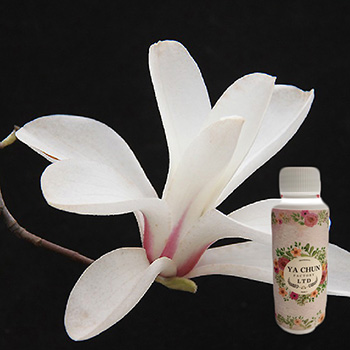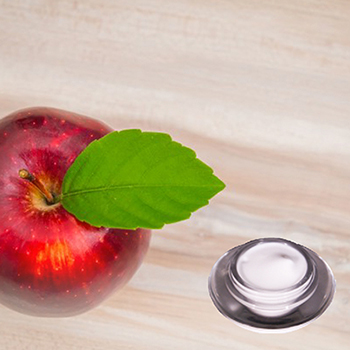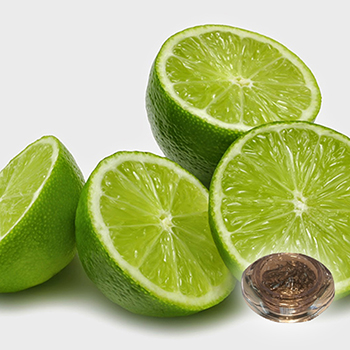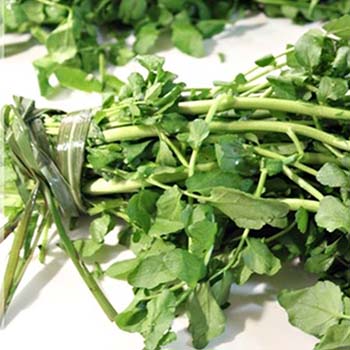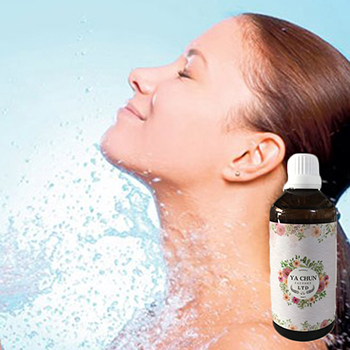目前購物車內沒有商品
Description:
Vitamin E is one of four fat-soluble vitamins. The vitamin is synthesized by plants, and has eight different isoforms (vitamers) divided into two classes of four vitamers each. The compounds are comprised of a 6-chromanol ring and an isoprenoid side chain. Compounds having saturated side chains are classified as tocols. The second class of compounds, known as tocotrienols (trienols), have unsaturated side chains. The groups attached to the R1, R2 and R3 positions on the 6-chromanol ring determine whether the vitamer is identified as alpha, beta, gamma, or delta. A large body of the research currently focuses on the alpha tocopherol form of vitamin E, which is the most biologically active.
Sources:
Synthetic vitamin E, designated dl-alpha-tocopherol, is the less expensive cousin of the naturally occurring form, d-alpha tocopherol. The natural form of the vitamin is synthesized only by plants and is found predominantly in plant oils. Vitamin E (tocopherol) is also present in high amounts within the chloroplast and therefore the leaves of most plants. In contrast, the tocotrienols are synthesized and found in the germ and bran sections of the plant. The fat-soluble property of vitamin E allows it to be stored within fatty tissue of animals and humans. Therefore a diet that includes meat supplies additional vitamin E. However, the amount of vitamin E obtained in a meat inclusive diet is less than the amount supplied by plant sources.
Sources:
Synthetic vitamin E, designated dl-alpha-tocopherol, is the less expensive cousin of the naturally occurring form, d-alpha tocopherol. The natural form of the vitamin is synthesized only by plants and is found predominantly in plant oils. Vitamin E (tocopherol) is also present in high amounts within the chloroplast and therefore the leaves of most plants. In contrast, the tocotrienols are synthesized and found in the germ and bran sections of the plant. The fat-soluble property of vitamin E allows it to be stored within fatty tissue of animals and humans. Therefore a diet that includes meat supplies additional vitamin E. However, the amount of vitamin E obtained in a meat inclusive diet is less than the amount supplied by plant sources.
As the outermost layer of protection for the body, the skin is constantly exposed to chemicals and environmental influences that affect its health and appearance. The top layer of skin is the epidermis, which performs an important barrier function between the external and internal environments. The next layer is the inner thicker layer called the dermis that is prominent for collagen and elastic tissue. (Figure 1).

Antioxidant Defenses:
The epidermis, which is the first line of defense against free radicals, contains a variety of antioxidants. The epidermis has a much higher antioxidant activity than the dermis since the epidermis is directly exposed to solar radiation. Antioxidant defenses include the lipid-soluble antioxidants vitamin E and carotenoids, the water-soluble antioxidants vitamin C and glutathione and the enzymes superoxide dismutase, catalase, glutathione reductase and glutathione peroxidase.
Application of vitamin E acetate to the backs of hairless mice immediately after UVB irradiation significantly reduced the increase in erythema index by 40 to 55%. In two experiments, the UVB-induced increase in skin thickness (a measure of edema) was significantly reduced by 29% and 54% at 24 hours and by 26% and 61% at 48 hours. After 8 days, thickness of the untreated irradiated mouse skin was still significantly increased. In contrast, the skin of treated irradiated animals was not significantly thicker than the skin of unirradiated controls. The researchers concluded that the edema, erythema and skin sensitivity commonly associated with UVB-induced sunburn are significantly reduced by topical vitamin E, even when applied after exposure to UV irradiation.
Topical application of vitamin E for two hours before UV irradiation to the skin of hairless mice protected against skin wrinkling induced by UVB at doses below the minimal erythemal dose. Significantly less acute and chronic skin damage induced by UV irradiation was observed in hairless mice treated with topical natural-source vitamin E.
Topical application of vitamin E and the combination of vitamins C and E significantly protected the skin from UVB damage (sunburn cell formation) in a study in swine. The combination of vitamin E and vitamin C was more effective than vitamin C alone in protecting the skin from UVA-mediated skin damage while vitamin E alone was not effective. Exposure of hairless mice to UV irradiation for 15 days resulted in intense skin tanning. When a cream or lotion vehicle containing vitamins C and E was topically applied to the skin before UV irradiation, erythema and tanning were inhibited.
In a study of the effects of chronic low-dose UV irradiation on the skin immune system of mice, UV irradiation induced immune suppression. Topical vitamin E was able to protect from a dose of UV irradiation capable of causing a 55% reduction in a specific skin immune response. Vitamin E had no effect on higher doses of UV irradiation.29 Topical application of a cream or lotion vehicle containing vitamins C and E also prevented UV irradiation-induced immune suppression in hairless mice.
In another study in hairless mice, topical application of natural-source vitamin E 24 hours before a single exposure to UV irradiation significantly reduced the formation of lipid peroxidation products in the epidermis. Topical vitamin E also increased dermal superoxide dismutase activity by 30% and protected epidermal glutathione peroxidase and superoxide dismutase from depletion after UV irradiation. Total and reduced glutathione levels in the epidermis increased by 50% and dermal vitamin C levels increased by 40%. As noted by the researchers, the results demonstrate that topical vitamin E protects skin tissues against oxidative damage induced by UV irradiation and suggest that this effect involves up-regulation of the network of antioxidants.
Lipid peroxidation and suppression of DNA synthesis were used to assess the degree of damage in another study of the effect of vitamin E on UV-induced skin damage in hairless mice. Lipid peroxidation decreased in mice treated with topical vitamin E 1 to 24 hours before irradiation, but not in mice fed high vitamin E levels. In both groups of mice, DNA synthesis was restored to levels of unirradiated mice. As noted by the researchers, both dietary and topical vitamin E protect the skin against some of the early changes induced by UV irradiation.
Three studies in humans have also explored the protective effects of topical administration of vitamin E or an antioxidant-containing cosmetic formulation on UV irradiation-induced damage (erythema, stress and wrinkles). Topical application of vitamin E prior to UV irradiation protected the skin of adult male subjects against erythema and mechanoelectrical changes. Protective effects were greatest at intermediate vitamin E concentrations and high doses of UV irradiation.20 In a 16-week study of 9 Caucasian female subjects, application of an antioxidant-containing cosmetic formulation protected lipids in the stratum corneum from oxidative stress caused by normal metabolism or UVB irradiation.
Ozone:
Exposure of mice to high levels of ozone for two hours significantly depleted vitamin E and vitamin C concentrations in the upper epidermis. Concentrations of these antioxidants were unchanged by ozone in lower skin levels. MDA production increased 10-fold in the upper epidermis and 2-fold in the lower epidermis following ozone exposure; MDA levels were unchanged in the dermis. The researchers observed that the high MDA levels in the upper epidermis suggest a direct reaction between ozone and fatty acids on skin surface layers. Chronic exposure to lower ozone concentrations present in urban smog could have implications for skin health.
An 81% incidence of skin cancer was observed in UV-irradiated untreated mice at 33 weeks after the first exposure to UV light. In contrast, skin cancer incidence was only 42% in mice receiving topical vitamin E 3 times per week for 3 weeks prior to UV irradiation and throughout the study. Vitamin E also prevented UV irradiation-induced immune suppression. As noted by the researchers, topical chronic vitamin E can effectively reduce cancer formation and immune suppression induced by UV irradiation.
However in a more recent study, these researchers found that topical application of vitamin E acetate or succinate did not prevent UVB-irradiation-induced skin cancer in hairless mice and may have enhanced the process. The esterified forms of vitamin E accumulated in the skin, but alpha-tocopherol levels remained low. According to the researchers, study results suggest that the limited capacity of skin to cleave esterified forms of vitamin E to alpha-tocopherol may explain the inability of vitamin E acetate or succinate to prevent UV-induced skin cancer.
In a study that investigated the effect of topical vitamin E acetate on inhibition of UV-induced development of skin cancer in hairless mice, vitamin E delayed tumor formation and yield for the first 20 weeks but the difference between the vitamin E-treated and control groups was lost by 30 weeks. Topical natural-source vitamin E and vitamin E succinate and oral natural-source vitamin E acetate significantly delayed the onset and decreased the number of UV-induced skin tumors in hairless mice.26 Topical application of vitamin E inhibited skin tumors initiated by DMBA in another study in mice.
Two studies in mice also investigated protective effects of oral supplementation with vitamin E, alone or in combination with other antioxidants, on UV-induced skin cancer. The influence of various levels of UV light on the anticarcinogenic properties of antioxidants (vitamins C and E, BHT and glutathione) was evaluated in a group of hairless mice. Tumor latency (median time to tumor development) was significantly greater for mice receiving oral antioxidant supplementation compared to unsupplemented controls at all three doses of UV light. Antioxidant-supplemented mice also had significantly fewer tumors than unsupplemented mice.
Supplementation with 100 or 200 IU of vitamin E acetate per kg diet significantly inhibited UVB-induced skin cancer in inbred C3H/HeN mice. However, toxicity was observed in the UVB-irradiated animals but not in the unirradiated mice. The researchers concluded that vitamin E is effective in decreasing the incidence of UVB-induced skin cancer in mice, but that further studies may be necessary to determine optimal vitamin E levels for safe and effective prevention of skin cancer.
Chemical Name:
The form of vitamin E most active in humans is Alpha-tocopherol, a powerful biological antioxidant. The name Alpha-tocopherol [tocopherol comes from the Greek word tokos 'birth' and phero 'to bear'
.
Vitamin E Chemical Structure, C26H44O2
Vitamin E and other antioxidants protect the cells of the body from the effects of free radicals, the potentially damaging by-products of the body’s metabolism. Free radicals have been known to cause cell damage which can contribute to the development of cardiovascular disease and cancer.
Four are found naturally:

Fig.1 The Chemical Structure of alpha-Tocopherol

Fig.2 The Chemical Structure of alpha-Tocotrienol

alpha-tocopherol
Action:
l affects the synthesis of hemoglobin
l antioxidant protecting cellular membranes from oxidative damage by preventing lipid oxidation, especially the peroxidation of polyunsaturated fatty acids, cholesterol and other free radicals
l essential for fertility and reproduction
l involved in red blood cell formation
l limits the oxidation of low density lipoproteins(LDL)-cholesterol ("bad" cholesterol) [which causes blockages in coronary arteries that may lead to atherosclerosis and heart attacks]
l may block the formation of nitrosamines [carcinogens formed in the stomach from nitrites consumed in the diet]
l may protect against the development of cancers by enhancing immune function
l prevents breakdown of body tissues
l protects vitamin A and essential fatty acids from oxidation in the body cells
l synthesis and maintenance of red blood cells and their constituents
|
Effect of Vitamin E Pretreatment or Wound Dressing on Healing Time after Laser Injury* Mean Healing Time (weeks) |
||
|
|
Copper-Vapor Laser |
Argon Laser |
|
Control |
4.1 ± 1.5 |
3.9± 1.0 |
|
Wound Dressing |
2.8 ± 1.3 |
2.9 ± 1.2 |
|
Topical Vitamin E |
3.3 ± 1.1 |
3.4 ± 1.4 |
|
Intramuscular Vitamin E |
3.2 ± 1.0 |
3.0 ± 1.1 |
|
* Medium Dose |
||
Summary:
This study showed vitamin E to be effective in preventing death of skin cells caused by Ultraviolet B radiation. The effect appears to be, in part, due to the inhibition of a compound that causes DNA destruction, NF-kappa B, whose activity is triggered by UVB radiation. The positive effect of vitamin E was most significant when it was applied before exposure to UVB radiation, but application after exposure was also beneficial. Skin care creams containing vitamin E have the added benefit of reducing damage caused by daily exposure to the sun.
Vitamin E reacts with these oxidation processes, terminating the formation of free radicals. In addition, Vitamin E also has an anti-inflammatory effect, and protects against clinical signs of photoaging (damage of the skin by ultraviolet radiation) such as wrinkling, roughness, loss of elasticity and brown spots.



